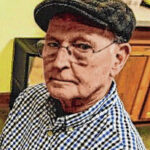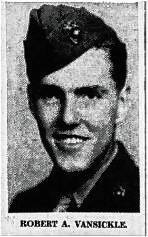“Far away places with strange-sounding names,
Far away over the sea,
Those far away places with the strange-sounding names
Are callin’, callin’ me.”
Thus sang Bing Crosby among others performing this hit song of the late 1940s. For the veteran survivors of the fairly recently concluded Pacific portion of World War II it was probably not a favorite.
The far away places for them would always be names such as Guadalcanal, Bougainville, Kwajalein, Tarawa, Peleliu, Iwo Jima, Okinawa, among others. And the “callin’” was per the insistence of the Japanese and soon thereafter “Uncle Sam.”
As the decades have passed fewer and fewer of the names of these tragic battle sites register with the general public. Saipan is such a place. That is unfortunate.
To quote Lt. Gen. Holland M. Smith, commander of the United States Fleet Marine Force in the Pacific, July 1944, “I have always considered Saipan the decisive battle of the Pacific offensive (it was) the naval and military heart and brain of the Japanese defense strategy.”
Among those who would not forget the name Saipan would be Mr. and Mrs. Earl VanSickle of Nashville, parents of United States Marine Robert Allen VanSickle.
Robert’s parents had moved to Nashville soon after Robert’s graduation from Southport High School.
He entered his country’s service in May of 1943 as a member of the United States Marines, 4th Division.
His basic training took place at Camp Lejeune in North Carolina and then it was the long train trip cross country to Camp Pendleton in California for specialized training prior to being sent to join the Allied forces working their island-hopping way north towards Japan.
Other than MacArthur’s obsession with returning to the Philippines, the principal Allied strategy was to move closer and closer to the Japanese homeland to provide air bases for the use of America’s new super-fortress bomber, the B-29.
The development of the long-range B-29 had been in progress since 1940. The cost of the development and production of this bomber in today’s dollars would be $45 billion. It was by far the most expensive project of the war.
The next most expensive project of the war was the Manhattan Project resulting in the building of two atomic bombs. This project came in at $24 billion in today’s dollars.
Thus, it was the use of the island-hopping strategy to bring the Japanese home islands into the range of the new bomber. And, of course, it would be the B-29 that would deliver the work of the Manhattan Project.
The Japanese home islands had been bombed once previously. Shortly after Pearl Harbor the “Doolittle Raiders,” using aircraft carriers, launched two-engine B-25 bombers struck at Japan.
The damage was negligible, but the psychological effect was enormous.
Back home in the States the attack greatly boosted morale. After experiencing bad news on a weekly basis of Japanese victories it was great to have punched back.
In Japan the effect was catastrophic.
The emperor Hirohito had been promised by his prime minister, Tojo, and his generals that this was not possible. It had two immediate effects.
First of all it led to the next month’s naval confrontation and the turning point of the war, the battle of Midway.
Secondly, and directly affecting the 4th Marine Division and Robert VanSickle, it led to Japan’s tightening their Pacific defense ring with Saipan as its keystone to better protect the Japanese homeland.
On Feb. 1, 1944 Robert experienced his first combat which took place on the Marshall Islands of Roi and Namur while at the same time the 7th Infantry was taking care of the Japanese held larger island of Kwajalein.
The success in the Marshall Islands allowed the U.S. forces to now move north to the next island chain, the Marianas, and the key island of Saipan.
Withstanding three days of American naval bombardment the 40,000 Japanese dug in and waited for the American invasion which came ashore on June 15.
The brutal battle would rage on for three weeks. Many died on the beach the first day; Robert was one of those.
The Battle of Saipan resulted in more than 3,000 U.S. deaths and over 13,000 wounded. From day one the wounded and dead were brought aboard the ships offshore.
Those scenes aboard the ships are best described by Ken Wiley in his book D-Days in the Pacific.
“The sea burials began on the first day out of Saipan. Wounded men who had died after the ship got underway were prepared for burial and carried on deck. Each body had a flag draped over it,” Wiley wrote.
“I wondered if I had known any of them. Was one of them a Marine I had talked with the night before (Saipan’s) D-Day? I looked at the white-wrapped corpses. Maybe one of them was the guy who had given me his good flashlight and told me he didn’t expect to come out alive. For the life of me, I could not remember his name. I hoped he had made it. The words of the chaplain filled my ears as the first body slid off the burial board and plummeted to the dark sea: ‘Lord, we commit this soul to you, and we commit this boy to the deep.’”
Any slim chance of Japan winning the war after their loss of Saipan and their defeat a month earlier in the Battle of the Philippine Sea was impossible now. Tojo, under threat of assassination, resigned; but they would not quit.
The runways were built. Saipan, the air base, began to deliver their payloads to the Japanese homeland. More terrible fighting continued at Iwo Jima and the worst battle of all, Okinawa. Japanese cities were torched. Only Hiroshima and Nagasaki made them quit.
In addition to his parents Robert was survived by his sister Mrs. Alice Hendricks and three brothers: Frank, Earl, and Sgt. Arthur VanSickle of the U.S. Army Air Force.
 Watkins
Watkins
Jim Watkins is a Brown County Historical Society member who wrote “The Fallen,” a memorial document about young men from Brown County who never returned home from World War II. Watkins was a public school teacher for 42 years and has always been interested in learning about WWII. He can be reached at [email protected].
 The cover of “The Fallen” by Jim Watkins that memorializes Brown County soldiers who never returned home from World War II. Democrat file photo
The cover of “The Fallen” by Jim Watkins that memorializes Brown County soldiers who never returned home from World War II. Democrat file photo





